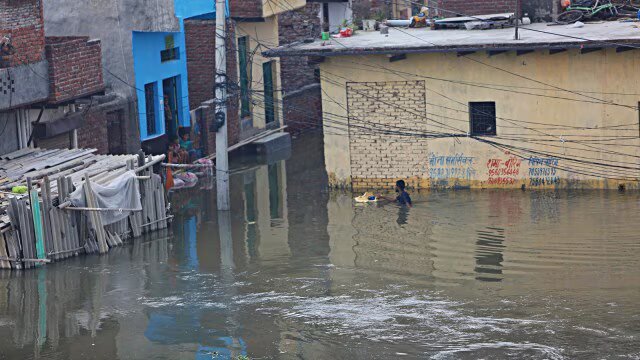Asia faced the most disasters in the world as 79 events associated with extreme weather, climate, and water-related hazards in 2023 affected over nine million people in the region, directly killing over 2,000 people, a new report by the World Meteorological Organization (WMO) said. Over 80 per cent of the reported hydrometeorological hazards in Asia were flood and storm events.
Over 60 per cent of the 2,000 deaths due to disasters were associated with flooding and over 15 per cent with storms, the ‘State of the Climate in Asia 2023’ report released on Tuesday said. Storms affected the largest number of people and caused the most economic damage during 2023.
Compared to 2022, the reported disaster events in the region were lesser by only two in 2023. However, the number of people impacted in 2023 was lower as the 2022 Pakistan floods, in comparison, had alone affected over 30 million people. In India, the impacts of extreme weather events were felt strongly as the country experienced severe heatwaves, rainfall-induced floods, glacial lake outbursts and tropical cyclones.
The report noted that Asia has warmed faster than the global average and the warming trend has nearly doubled since the 1961-1990 period. The accelerating rate of key climate change indicators such as surface temperatures, glacier retreat and sea level rise will have major consequences for Asia, its economy and ecosystems, the report emphasised.
WMO’s Secretary-General Celeste Saulo said the report’s conclusions are sobering. “Many countries in the region experienced their hottest year on record in 2023, along with a barrage of extreme conditions, from droughts and heatwaves to floods and storms. Climate change exacerbated the frequency and severity of such events, profoundly impacting societies, economies, and, most importantly, human lives and the environment that we live in,” she said.
In April and June 2023, severe heat waves resulted in about 110 deaths due to heatstroke, the report noted. Last year, the Ballia and Deoria districts in Uttar Pradesh saw the deaths of over 100 people, many of them senior citizens with co-morbidities. Temperatures were in the 42-43 degrees Celsius range in the region during these heat-related deaths, the report said.
A prolonged heatwave also affected much of Southeast Asia in April and May, extending westwards in Bangladesh and eastern India, and parts of China too.
Flood events occurred in India during August 2023 and Himachal Pradesh and Uttarakhand recorded 25 deaths as well as extensive damage to infrastructure and agriculture, the report said. “Triggered by heavy rainfall, the disaster compounded the effects of an earlier monsoon surge in June. The Indian government declared a state of emergency in the worst-affected areas, initiating rescue and relief operations,” the report added.
The Indian sub-continent experienced six tropical cyclones in 2023 which formed in the North Indian Ocean. The cyclone activity was slightly above the average of 5.4 cyclones, the report noted. Four out of the six cyclones – Mocha, Hamoon, Midhili and Michaung – formed over the Bay of Bengal and two – Biparjoy and Tej – formed over the Arabian Sea. The extremely severe cyclonic storm Mocha made landfall along the Rakhine Coast in Myanmar on May 14 and killed 156 people.
In India, Michaung made landfall in south Andhra Pradesh on December 5 and claimed 22 lives.
The report also took note of the “significant glacial lake outburst flood” that occurred in South Lhonak Lake in Sikkim on October 4 last year. The incident had overtopped and breached the Chungthang dam downstream on the Teesta River and killed over 40 people, according to the Sikkim government.
“This type of disaster is increasingly observed because of climate change-induced glacier retreat and highlights the compounding and cascading risks faced by vulnerable mountain communities,” the report said.
Published In: www.indianexpress.com



